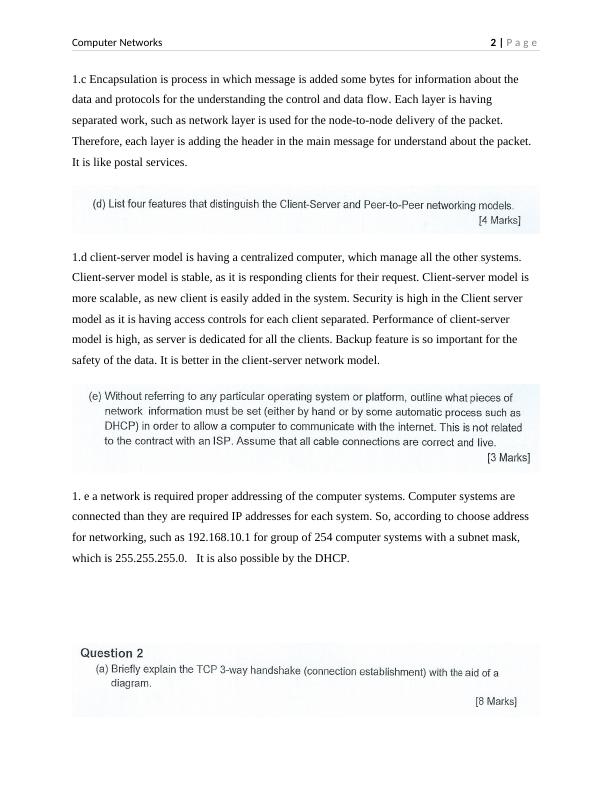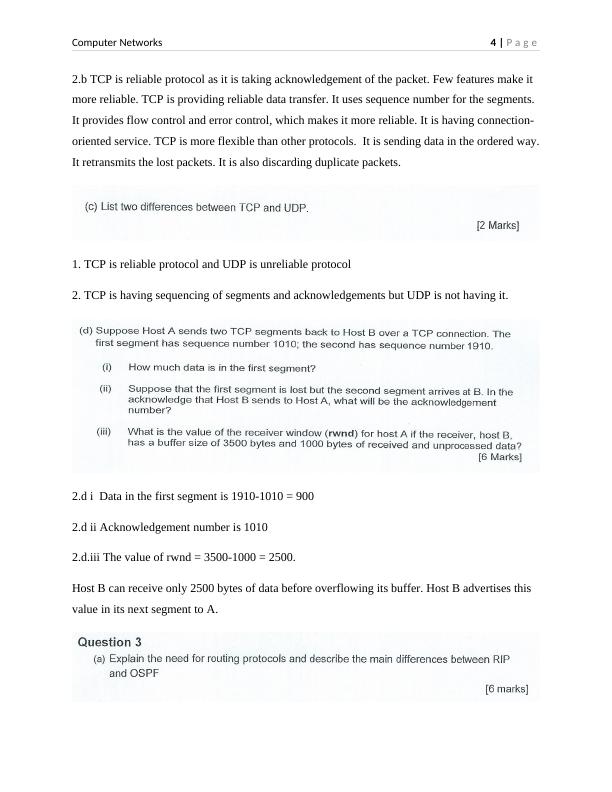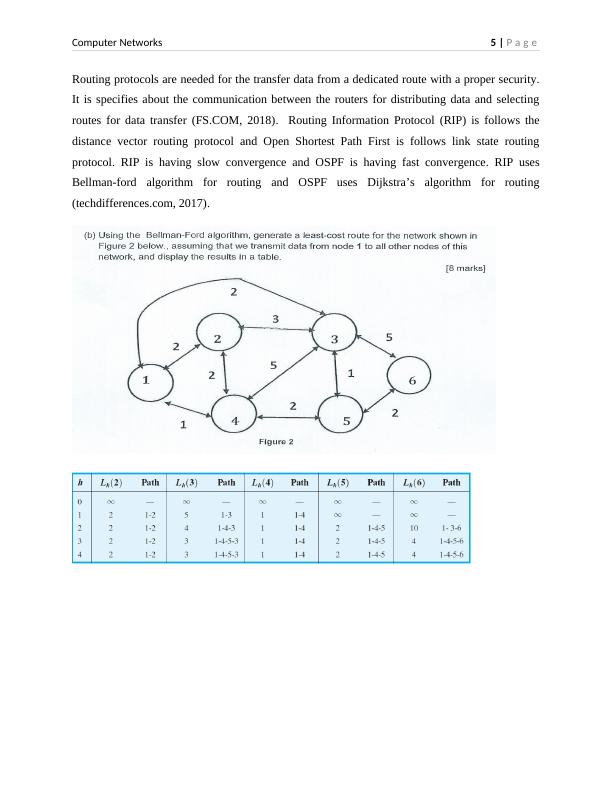Computer Networks
24 Pages3023 Words327 Views
Added on 2023-04-20
About This Document
This document provides information on various topics related to Computer Networks such as OSI model, TCP, UDP, IP addressing, routing protocols, and more. It includes explanations, examples, and comparisons to help understand the concepts better. The document also mentions the different types of assignments and their solutions available on Desklib for Computer Networks.
Computer Networks
Added on 2023-04-20
ShareRelated Documents
End of preview
Want to access all the pages? Upload your documents or become a member.
Assignment On Fundamentals Of Computer System
|11
|2375
|26
Networking Protocol and OSI Reference Model Quiz
|4
|558
|488
Chapter 5 Mini Case: Network and Transport Layers
|5
|693
|425
Networking: Functions of Network Layer, Components of LAN, Error Checking, Framing, Access Methods, Codes for Error Detection and Correction
|33
|9025
|178
TCP/IP and Subnets | Question and Answer
|8
|1638
|18
Networking: Layers of OSI and TCP/IP, Data Encapsulation, SNMP Components, and More
|11
|2504
|410






